
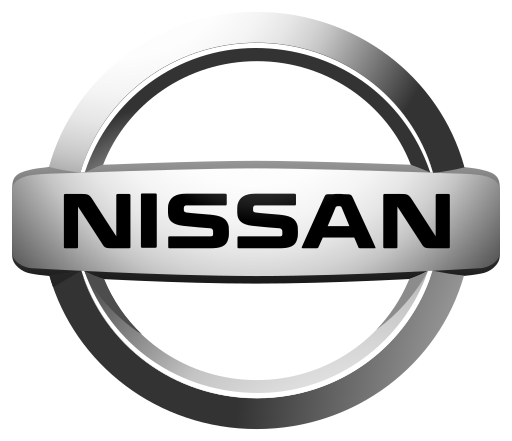
Nimbus
-
Content Count
30 -
Joined
-
Last visited
-
Days Won
5
Posts posted by Nimbus
-
-
OpenRoad, Thanks for posting that. That is just what I was looking for.
radin2son, for me it was mainly curiosity. I just wanted to see how much suspension squat the weight of our new camper build caused. It still drives nice with the extra weight, maybe even better than before, so I'm not too worried about it. I haven't measured it yet, my driveway is at a slant, but I will soon, and if radically different from the stock height I might consider upgrading the springs. By "fully loaded to spec," are you asking what the ride height is when the vehicle is loaded to max GVWR?
-
OpenRoad, sorry I don't have any shock suggestions, but I am curious where you found the unladen ride height specs? And how would a person go about measuring it? We have a 2012 NV3500 High Roof with a camper conversion. It's still well below GVWR but it definitely seems to be riding lower than before the conversion. Wish I would have measured it and wrote it down but didn't. Thanks.
-
15 minutes ago, Local Apparent Friday said:@Nimbus What did you use for adhesive? I'm debating between windoweld or 5200.
We used Windoweld as recommended by the manufacturer. It was pretty spendy and hard to find but I think it was worth it. We also used Dicor lap sealant for sealing around the edges of the roof fan and flange.
Local Apparent Friday reacted to this -
You are correct, sir... Charley Nobles have been in use for centuries on sailing vessels. They had a little water basin so that the heat of the coal fires wouldn't set the wooden decking afire. I'm a recovering sailor too... have had several sail boats from 20 to 32 footers over the years. I figure since I can't be on the ocean having a van is the next best thing.
Local Apparent Friday reacted to this -
Dang, the punch list is just about all punched out. Today we hooked up the roof vent for our on-demand propane water heater. We had installed the roof jack last summer when I "machined" a piece of 3/4 " UHMW plastic to roughly the same approximate profile as the van roof and stuck that down with 3M Window Weld adhesive followed by a coating of Dicor sealant and a then a silicone rubber roof jack, followed by more Dicor. Very similar to the roof fan installation and we've had no leaks on either so far (knock on wood). The stainless-steel vent camp is from Defender and is designed for boats. It has internal baffling to prevent wind-blown water from entering and we added an internal sleeve of stainless-steel bug screen to ward off mosquitoes and yellow jackets. Also installed a tree branch deflector made out of 1/8" aluminum bar stock since it does stick up about 3" past the plane of the roof rack.
-
Gear
in Conversions
I've been using one of these for many years. It rolls up small when empty and can be used as a solar shower. A 10 L size runs about $50 or so. They also make a lighter weight version for backpacking.
Local Apparent Friday reacted to this -
Thanks, that pic was taken near McCarthy, AK, an old mining town at the end of a 6o mile dirt road with the Kennicott Glacier and the Wrangell Mountains in the background. Amazon.com: ORIA Indoor Outdoor Thermometer with 3 Wireless Sensors, Digital Hygrometer Thermometer, Temperature Humidity Monitor Meter with LCD Backlight, Wireless Thermometer for Home, Office, Bedroom, Black : Patio, Lawn & Garden
-
17 hours ago, Local Apparent Friday said:Sweet build! Thanks for taking the time to post up...i'd love to see some more details about all the electrical goodies that are on that panel you built. Also, you can add bags or sonicsprings to the rear to help with the weight a bit. What are your stomping grounds? You on instagram or other platforms as well?
- laf
Thank you.
I admit I got a bit carried away on the electrical panels. I probably could get by on half the circuits but it looks kind of cool in a spaceship cockpit sort of way. The panels are hinged and swing out to access the back side wiring. This feature is very handy. There is a fuse panel, master on/off switch, lighted switches for all the house circuits, a switch for a roof rack mounted LED perimeter lighting system that lights up the surroundings like daylight if something goes bump in the night, a Victron battery monitor, lighted voltmeter so I can keep an eye on battery voltage at a glance, USB charging ports, the remote display for the solar charge controller, a breaker and disconnect switch for the 350 watts of solar panels, a Pioneer stereo head with Bluetooth and DVD player (can watch movies on the 12v television on rainy evenings), and a 4-station temperature monitor system that reads room temperature, refrigerator temperature, battery compartment temperature, and outside temperature. We have little LED lights to illuminate the switch panels and some spare switches for future gadgets if needed. There is also a separate "always-on" fuse panel inside for the refrigerator, propane sniffer, entry light, etc. so that these circuits don't get accidentally turned off.
No, sorry, I don't do Instagram and swore off Facebook a year ago. We are in Southcentral Alaska and we typically do trips to McCarthy, Dawson City (Yukon Territory), the Denali Highway, and the Kenai Penninsula. We do plan to drive Nimbus down through Canada to lower 48 (SW states) once a family health issue gets resolved so perhaps our trails will cross.
Local Apparent Friday reacted to this -
22 hours ago, radin2son said:Unless you already have calculated all things going into Nimbus, 1500 lbs will disappear quickly when you add the weight of water, food, 2 people and gear.
One thing you may want to add, if you haven’t already, is reflectix windshield/front window covers. It provides privacy and opens up the area, making the interior look bigger. Our van came with a cloth curtain that draped down from snaps above the windshield and side windows, obscuring the dash and steering wheel. To confining for me.
You probably have room for the John Steinbeck washing machine and bungee drier.... We use a dish pan or look for a KOA tent area for a real shower and do laundry.
That weight was with full gas and water tanks, most trip gear except food, and one person (me) inside. Hopefully we're fine on the weight. Glad we bought the one-ton version.
I have materials to make some nice window covers but will wait until winter to sew them up when I have more time.
-
3 hours ago, radin2son said:"Shower curtain installed! So, how do you plan to use your NV?
You have a lot packed in 10’. It will be interesting to see the “lived in” photos."
We're both recently retired so we have more time now to travel, especially now that Nimbus is nearing completion. We have been doing trips to various Alaska locations this summer, will likely do some cold-weather skiing and fat-tire biking excursions this winter, and plan to drive it south for winter travels in the southwestern lower 48.
We did manage to cram a lot of amenities into such a small space although we did have to forego the washing machine and billiards table. We're still about 1,500 lbs. below GVWR so we're doing okay weight-wise. I am, rather ironically, claustrophobic but the front salon area looks out over the windows in the sliding door, which can be left open in good weather, and the aft portion seems a lot bigger with the windows and especially when the rear doors are opened. We also have a bug net that we can deploy back there too. Having a center aisle helps too. And we have a Moon Shade awning which creates a covered outdoor space. Anyway, it actually seems bigger than it really is and the small space syndrome hasn't gotten to me yet.
Yeah, it's going to require some maintenance (painting, revarnishing, etc.) but that shouldn't be too hard to keep up on. Hopefully it won't look too lived in.
-
Thank you. I guess no van can be called finished until the shower curtain gets installed, so here's a pic of that. Somehow the decor scheme came out a little bit posher than I had originally envisioned. Not sure how that happened. Just a couple small jobs remaining: install vent through roof for water heater (already have the roof jack in) and hook up the perimeter lights on the roof. I will probably think of some other tasks but no hurry on those.
radin2son and Local Apparent Friday reacted to this -
This build thread is a bit different than most as we waited until we finished to post it. In closing, I'll just say that this has been a helluva lotta work. Not just the actual work but lots of planning, sketching, scheming, and ordering. We've been working on this for well over a year now. I can now see why van upfitters charge so much. But we have gotten to use it on several trips this so far summer and it is working out well, gets a lot of attention wherever we go, and drives like a dream. If anyone has any specific questions, feel free to ask. I did gloss over some of the steps of this van build. Thanks for reading.
Local Apparent Friday reacted to this -
radin2son and Local Apparent Friday reacted to this -
Moving on to the bathroom, we located it just inside the rear doors to make it seem larger than it actually is. The walls are lined with white FRP board (fiberglass reinforced plastic) that is waterproof and easy to clean. We had to make a custom fiberglass shower pan to fit over the wheel arch. The PortaPotty is mounted to a teak "Head Sled" that slides on T Track and allows the toilet to be slid out in order to take a shower. Otherwise it stores the toilet securely yet ready to use inside the bathroom. The sink is located just across the aisle.
Local Apparent Friday and radin2son reacted to this -
To carry bikes we came up with a bike rack that slides into T track mounted along each side of the center aisle. It holds two bikes and can be partially extended out over the rear bumper for loading and unloading. The contraption can be stowed at the rear of the center aisle when not carrying bikes or can be removed for use as a lockable bike stand in camp.
Local Apparent Friday and radin2son reacted to this -
Speaking of windows, we also installed an Arctic Tern awning-style window in the passenger side slider. It can be left partially open in the rain for ventilation and has a built-in privacy shade and mosquito screen.
radin2son and Local Apparent Friday reacted to this -
Local Apparent Friday and radin2son reacted to this -
Once all the rough cabinetry was in, things slowed down considerably as we tackled the finish carpentry. We used clear pine for much of the trim to save weight but used red oak for cabinet face frames and some trim, black walnut for the countertop, and teak for the dining table and in the bathroom. Cushions are 5" thick memory foam with covers I sewed. There is a zippered, quilted curtain behind the cab that blocks light and holds heat. Cabinet doors are 1/2" AC plywood. We also made a loft cabinet above the driver's compartment for storing bedding, clothes, and other lightweight items. And we installed a stamped-tin backsplash behind the galley countertop.
radin2son and Local Apparent Friday reacted to this -
Once the walls were in place we moved on to the cabinetry. For the settee and part of the galley cabinet we used 2 x 2 hemlock framing. No 80/20 was used in this build, we feel that wood framing is much lighter and a lot more affordable. All joinery is glued and screwed. A 20 gallon water tank is located in the passenger side galley cabinet and secured to the metal van floor with 8 mm bolts and a ratchet strap. At the rear of the galley cabinet is a propane locker that is airtight and drains to the outside through a 1" PVC pipe mounted through the floor. A 105 amp-hour Lion lithium battery is mounted underneath the driver's side settee along with our shore power panel, battery charger, diesel heater, and stereo amp. The settee also sports a large drawer for heavier items and has more storage accessible through hatches underneath the mattress.
radin2son and Local Apparent Friday reacted to this -
Moving on to the walls, we fastened 1 x 3 pine furring strips horizontally, fastening them to the wall ribs with construction adhesive and 1/4 - 20 stainless bolts into Plus Nuts. We then stapled Reflectix between the furring strips, leaving a ~ 1/2" air space on each side. All wiring is run in plastic loom and fastened securely to the furring strips. We also installed the driver's side slider window at this time. We then used 3/8' AC sheathing behind future cabinets and 3/8" beadboard wainscoting panels at exposed areas. Sheathing was primed and painted on both sides before being glued and brad-nailed to the furring. For that matter, just about everything is glued and mechanically fastened to prevent squeaks.
radin2son and Local Apparent Friday reacted to this -
Which brings us to the floor system. Luckily the factory sheet metal was in decent shape, just had to touch up a few scratches. Also drilled holes for a drain for the propane locker and a drain for the shower. We glued 1" XPS foam directly to the top of the factory floor corrugations with heavy-duty construction adhesive.. Our thinking is that any water that collects under there can simply drain out forward the first time we go down a hill. Over the foam we glued 5/8" AC plywood painted on both sides and biscuit-joined the butt joints. We used as many of the factory 8mm bolt holes as possible and sealed the rest. The lower course of wall furring will also help secure the floor system around the edges.
radin2son and Local Apparent Friday reacted to this -
Next up was the ceiling. We found some nice red cedar planking at the local big box store. Before we installed it, we sanded it and finished it on all sides with three coats of gloss oil-based varnish. The wood has a lot of knots in it and we were worried some of them might rattle loose and fall out over time, so we backed each knot with a piece of Gorilla tape to help ensure the knots stay in place. We had previously mounted 1 x 2 sleepers to the underside of each metal roof rib with Plus nuts and 1/4 -20 stainless screws and had added Reflectix radiant barriers between each of them with an air space on each side. Each piece of cedar planking was glued in place with heavy-duty construction adhesive and fastened with 18 guage brads with a pneumatic air tool. There is about an inch and a half of urethane foam topped off with Reflectix (probably around R-11 all told) to help keep our climate controlled. We are in Alaska so having adequate insulation was very desirable. We took our time installing the cedar and got everything nice and snug.
Local Apparent Friday and radin2son reacted to this -
Next up was wiring. We devoted a good chunk of wall space behind the driver's seat for fuse and switch panels, a solar charge controller and related goodies, a Victron battery monitor, and a stereo and small television. This turned into a much bigger project than planned but it all worked out in the end.
radin2son and Local Apparent Friday reacted to this -
Next we installed a roof rack. We used towers and cross members from VanTech and added 3/16" aluminum along the sides and front. We were able to mount two 175-watt tiltable solar panels while still having room for a MaxxFan and a small rooftop deck. We also mounted an LED light bar and a Lexan fairing on the front and LED perimeter lights along each side and towards the rear. Also mounted UHMW ladder chocks along each side to support a 12-foot extendable ladder.
Local Apparent Friday and radin2son reacted to this


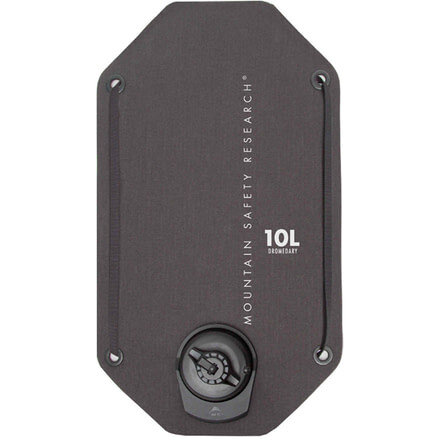
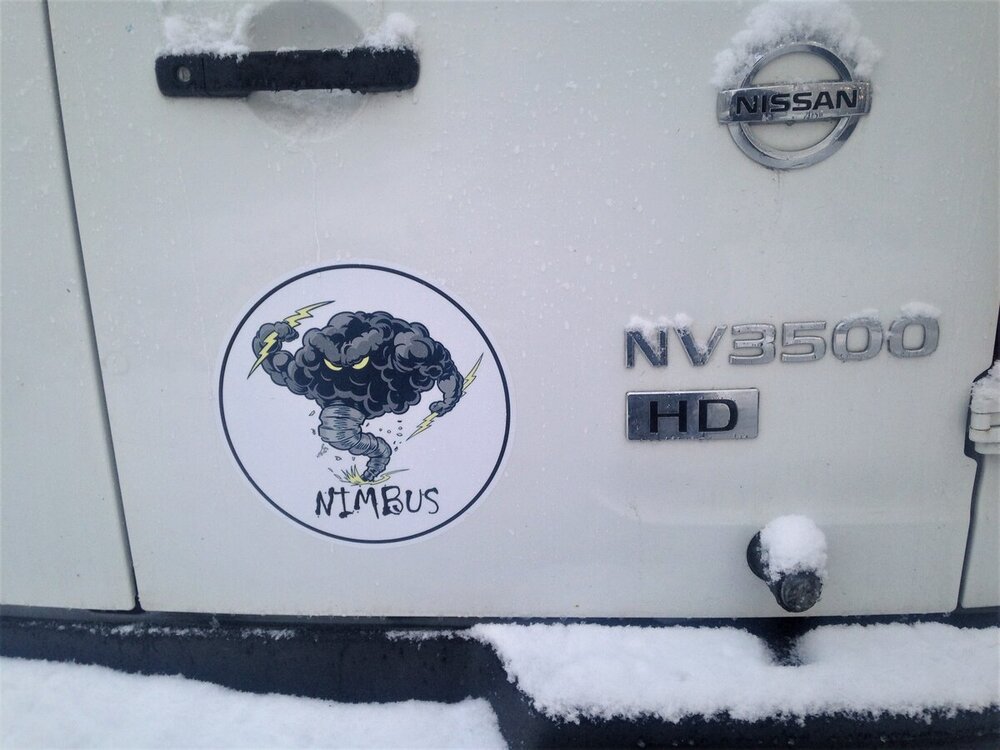
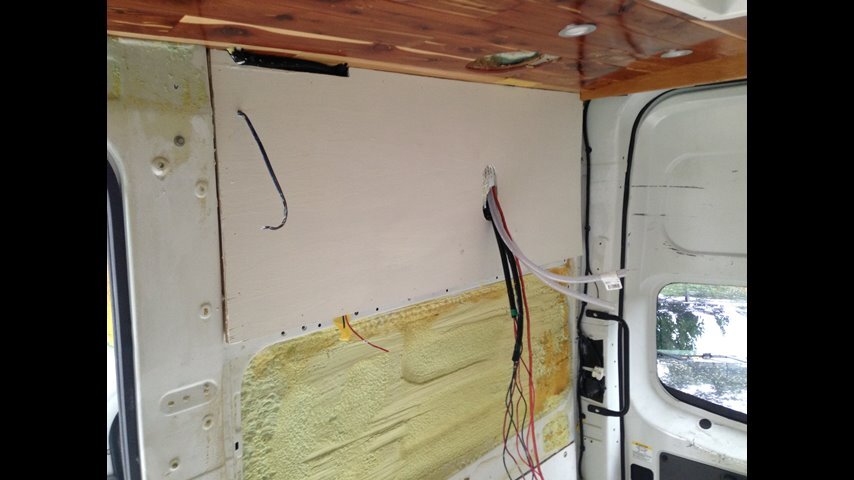
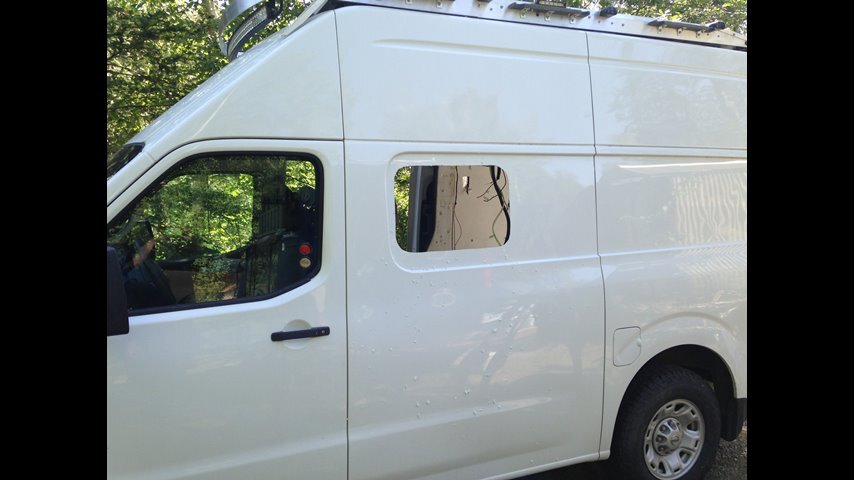
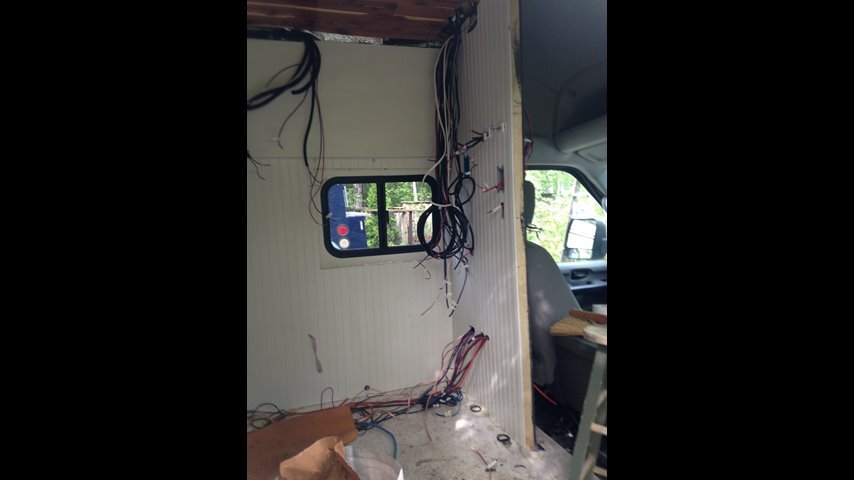
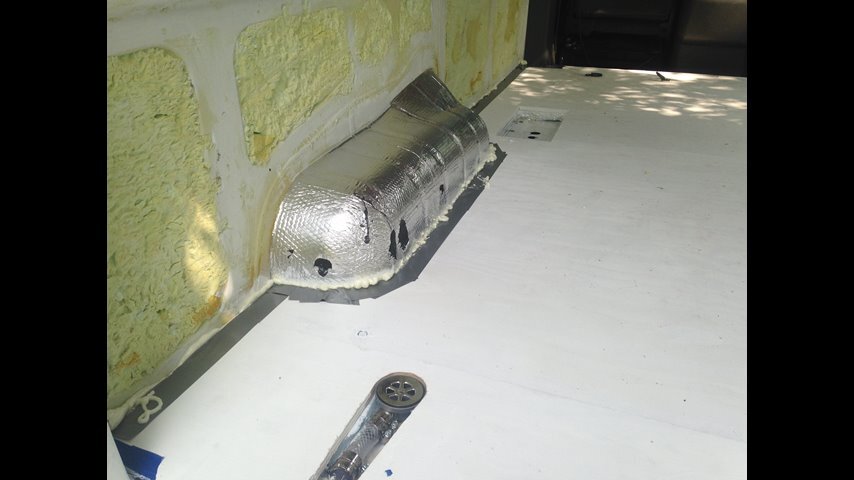
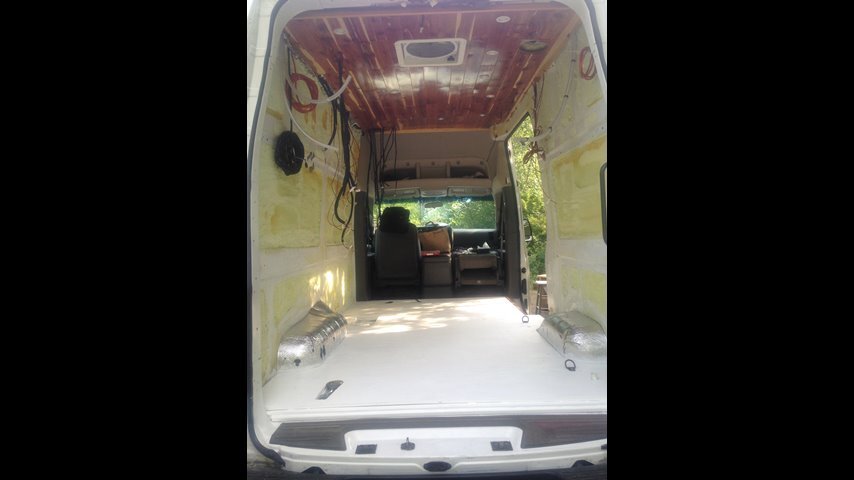
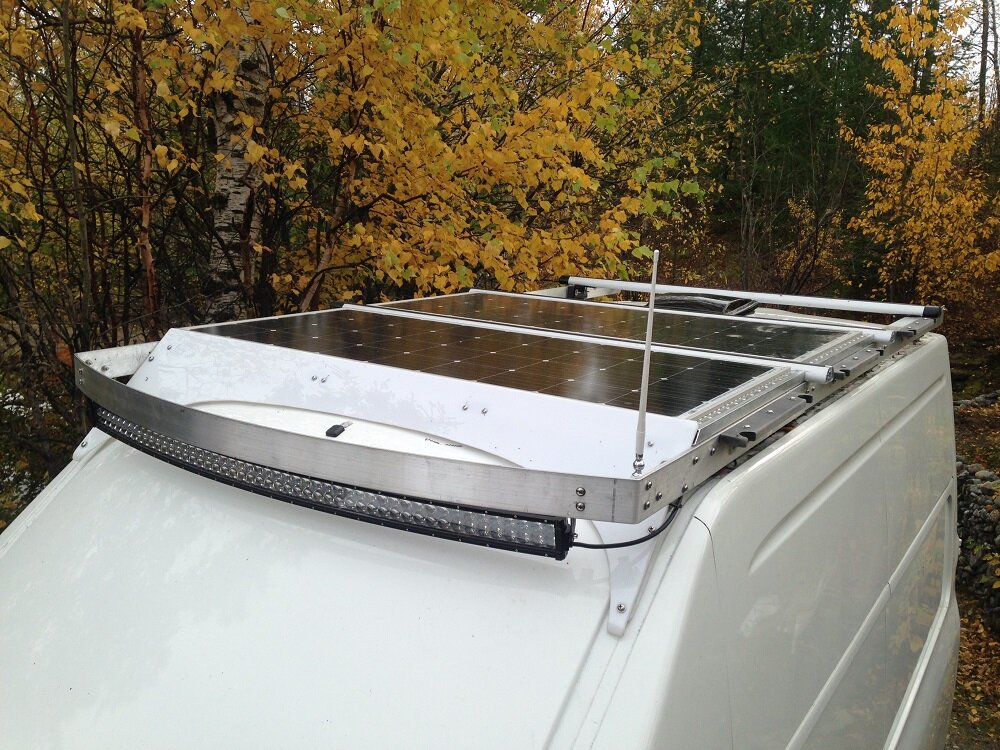
Diesel air heaters
in Climate Control
Posted
We installed ours on a bulkhead behind the driver's seat. It's attached to a piece of 1/2" plywood. The bottom is hinged so it's easy to tilt it out for fueling through the driver's door.